How to Catch Spanish Mackerel from Shore
Casting to Spanish mackerel from shore is an exciting way to catch these strong, fast, toothy and tasty migratory specimens.
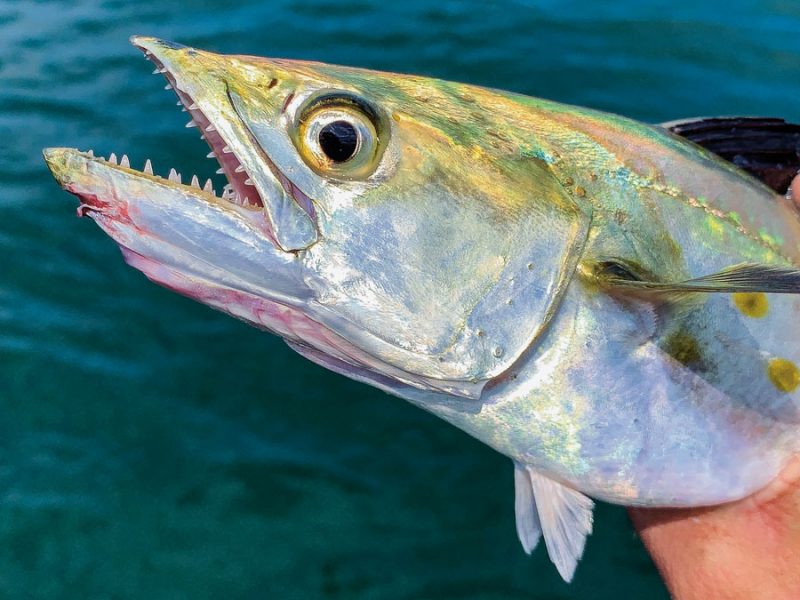
While the Northeast’s most heralded pelagic, the false albacore, arrives in September, recent seasons have provided earlier opportunities for anglers to target “hard tails” like Spanish mackerel from shore.
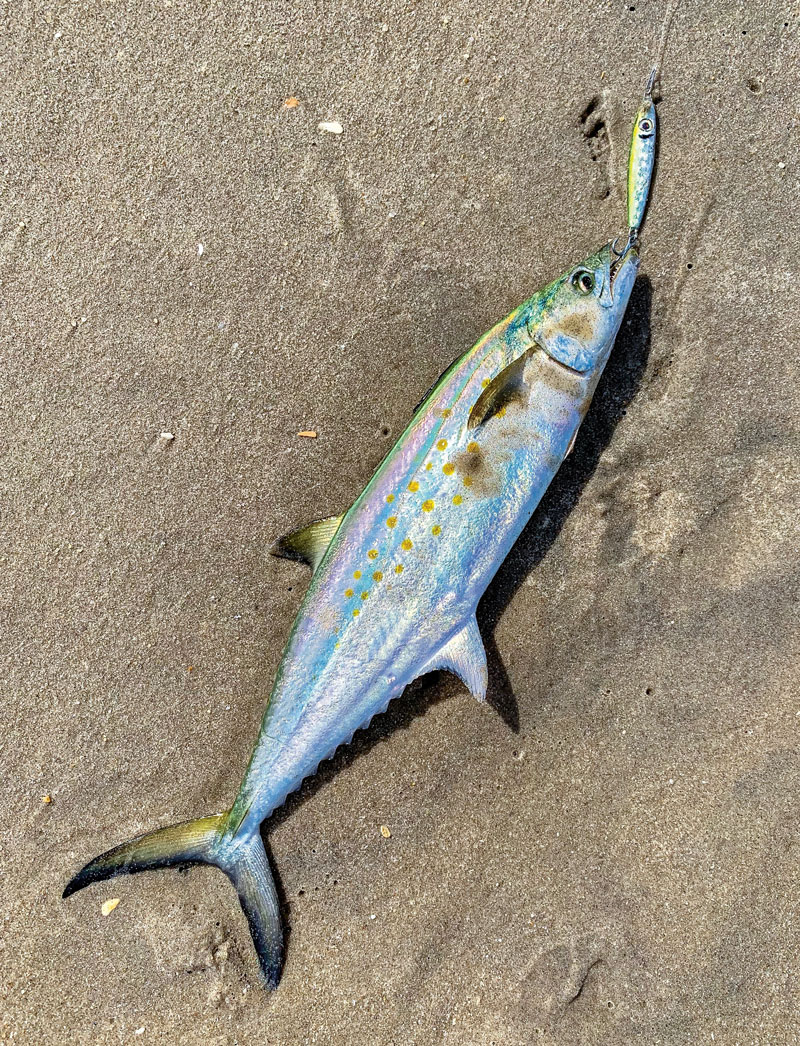
(Note: On The Water is reader-supported. When you buy through links on our site, we may earn an affiliate commission.)
By June 2018, the ocean water of New Jersey was already unusually warm. The above-average water temperature held for most of the summer. By the middle of July, there were regular reports of Atlantic bonito and Spanish mackerel being caught from the surf. Anglers targeting these species were able to catch their fill of bonito through all of August, while the mackerel left at the beginning of the month.
The summer of 2019 saw the return of the bonito and Spanish mackerel. I caught my first bonito on June 22 while blind-casting; five days later, I caught my first Spanish mackerel of the year, and then several more large ones. A number of the fish were over 20 inches, with my best of the season just shy of 23 inches.
In 2018, from shore, I caught approximately 13 Spanish mackerel and more than 100 small bonito. The following year was nearly a complete flip-flop because I landed 14 bonito and more than 80 Spanish mackerel. Both species returned noticeably larger than the year before.
The first summer, my style of targeting bonito and Spanish mackerel was similar to my approach to false albacore. No matter where I fished—beach, jetty, or boat—my technique was casting far, allowing the lure to sink, and retrieving very quickly. This technique brought me my first of each species and then a handful more, so I just stuck with it for most of that summer and fall.
In July 2018, I blew through almost all my summer fishing budget on different weights and jig styles. Compact metal jigs that cast well produced the best results, and fast-sinking lures that stayed down through the retrieve got more bites. My ideal jig weight is 1 to 1.5 ounces with a small profile.
The mackerel stayed on the beach into September, when I caught some nice ones in the surf, both by jigging and with a quick retrieve.
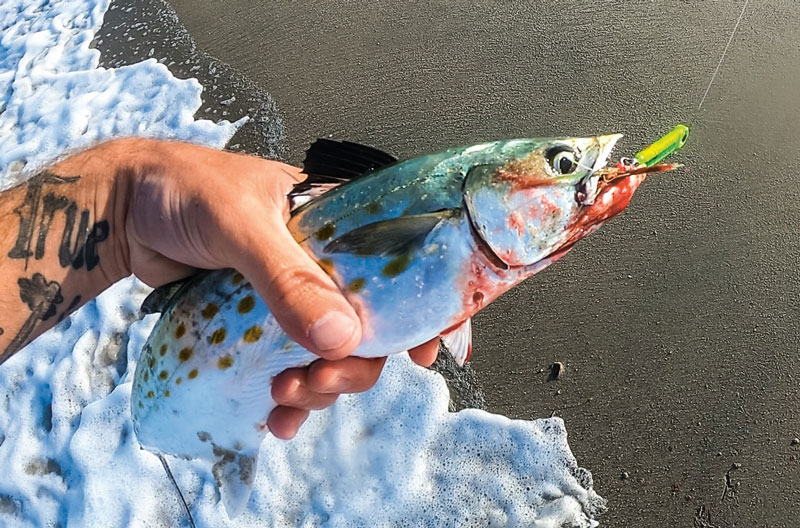
During the summer of 2019, the techniques that had worked the year before—when there were relatively few mackerel around—didn’t seem to be working despite a greater abundance of fish. As the summer wore on, I came up with more effective approaches for these southern visitors.
Strategies for Spanish Mackerel from Shore
Go Deep
While fishing, I quickly lost count of the number of fish I saw blasting out of the water. Despite the fish showing on the surface, I was not getting many bites with the cast-far, retrieve-fast technique. I thought back to the previous summer, when my friend Chris told me he had jigged a few mackerel from the bottom of the inlet, about 15 feet down. I started casting as far as I could up-current and letting my jig sink to the bottom. Since I didn’t want to fully bounce the bottom (such as when fluking), I hit the bottom and reeled up a crank or two. I did this just enough so that when I lowered the tip of my rod, I felt my jig hit the bottom. With the rod tip relatively high throughout the retrieve, I varied between single and double bounces about 1 to 3 feet off the bottom through an area. If nothing came back on the first drift, I repeated the same drift. After two unanswered drifts, I cast a bit closer, repeating the drift to cover a different section of water, continuing this process until I found the fish.
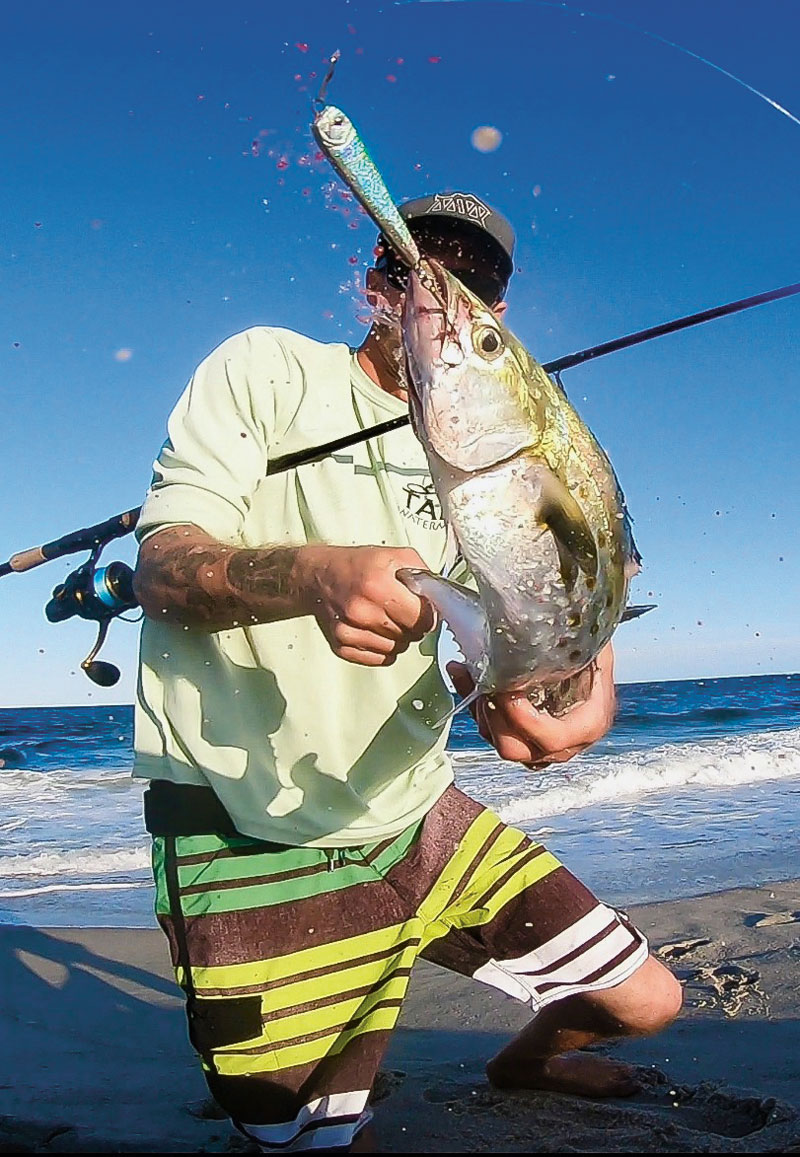
Throughout the summer, jigging 1- to 1.5-ounce metal jigs landed the overwhelming majority of my Spanish mackerel. Though this method was extremely effective, there were days when it didn’t work, even though the fish were all over the place.
Spin for the Win
On one outing, after a few hours of watching fish jump out of the water without so much as a single bite, in an act of pure desperation I tied on a 5/8-ounce freshwater inline spinner and began to cast. I could not throw the lure very far, but my setup was light enough to get the lure into range. Casting down-current, I let the light spinner sink as far as it could with the current ripping by. On the retrieve against the current, the lure kicked out a surprising amount of vibration. I did not retrieve fast at all because doing so would have been impossible with all the drag from the current. A few slow pulses on the super-slow retrieve were all I needed to get a bite. After hours of unanswered casts, this little white and silver inline spinner landed five nice-sized Spanish mackerel in 10 casts.
Saltwater Float N’ Fly
Near the end of the summer, when the fish were a bit more difficult to catch, a friend of mine clued me in on a method used down in Florida for targeting Spanish mackerel. Fishermen add casting bubbles (hollow, clear plastic spheres or cylinders that can be filled with water) to allow them to cast small lures a long way while still keeping them high in the water column on slower retrieves. Adding weight on the line means you can throw really small lures a long distance and work them in a slower manner.
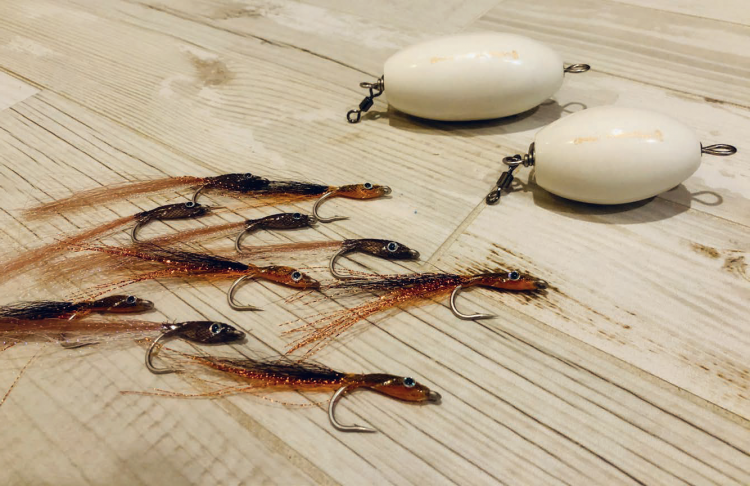
Using an A-Just-A-Bubble and a Snapper Zapper fly made of Mylar flash, I caught fish when other methods would not work.
Spanish Mackerel Jigs
When long casts are necessary to reach breaking fish, the compact, slender profile of a casting jig will allow you to reach the feed and fish your lure at various levels of the water column. However, as previously stated, Spanish mackerel often prefer a sub-surface retrieve; sometimes, letting your jig sink before beginning the retrieve will lead to more bites.
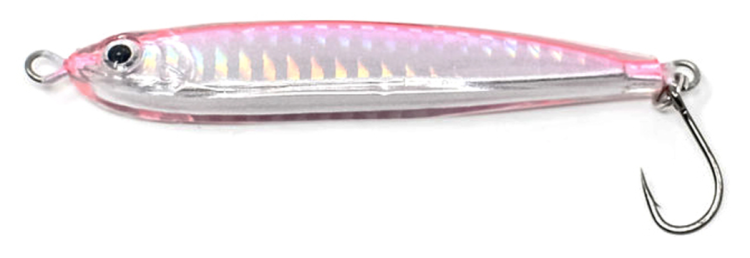
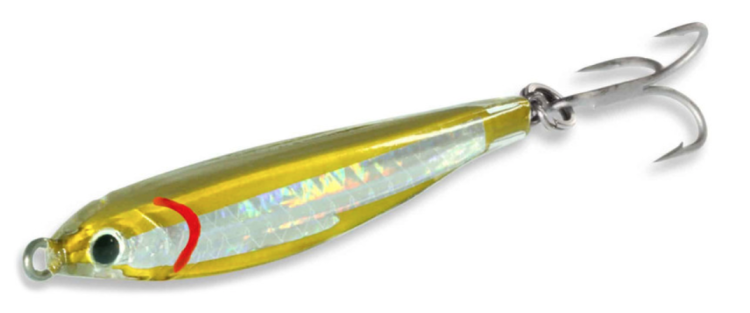






Mackerel Tackle
For casting to Spanish mackerel from beaches and jetties, my favorite setups were medium to medium-light rods from 7′ to 8’6” paired with matching spinning reels in the 3000- to 5000-size range, spooled with 10- to 15-pound-test braided line.
In general, I use the shorter rods when casting from the jetties, and the longer rods to help get more distance from the beach. The lighter braided line allows for longer casts and is plenty strong for both Spanish mackerel and smaller bonito, though I do sometimes bump up to 20-pound braided line for added abrasion resistance when fishing around rocks.
For a reel, I use the Penn Slammer 4500, which I like for its retrieve ratio. Pulling in 40 inches per crank, this reel is perfect for fast retrieves or gaining line when a pelagic turns and swims right at me.
Spanish mackerel have keen eyesight, so a fluorocarbon leader is an essential part of the tackle. I use 3 to 4 feet of 15-pound test Seaguar Inshore fluorocarbon leader connected to the main line with a uni-to-uni knot. The long leader comes in handy when fishing around jetties.
While I released most of the Spanish mackerel I caught, a few that were mortally wounded by the hook came home to make a delicious dinner. Seasoning with salt and pepper, then pan-searing the fish in olive oil, lemon, and garlic produces a simple yet amazing dish.
Related Content
5 on “How to Catch Spanish Mackerel from Shore”
-
Rich Thanks!
-
Edward This was a great, easy to digest piece. I’ve never caught Spanish mackerel but always wanted to and this will be tremendously helpful for me.
-
Liam Where are we catching all these fish?
-
-
Sean I fish the pierson the Florida Panhandle, and along with bubble rigs / straw rigs, I’ve caught a lot of Spanish on Gotcha Jigs. White body with red head seems to work the best for me. They have enough weight for long casts and can sit high or mid level in the water, and the action they have when you are jigging it right is quite enticing to the fish.
-
Jeff Pendergrass Which penn slammer 3. I see a couple of different ones
Thanks
Jeff
Leave a Reply